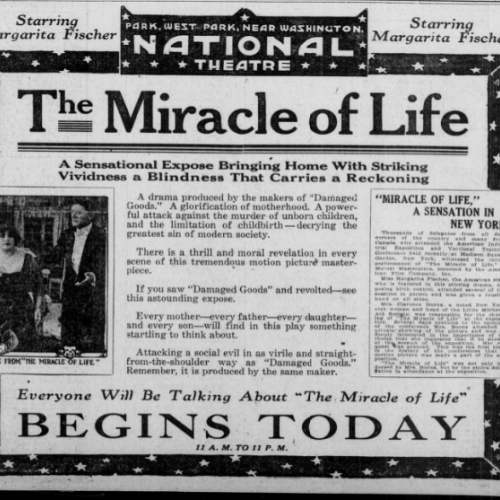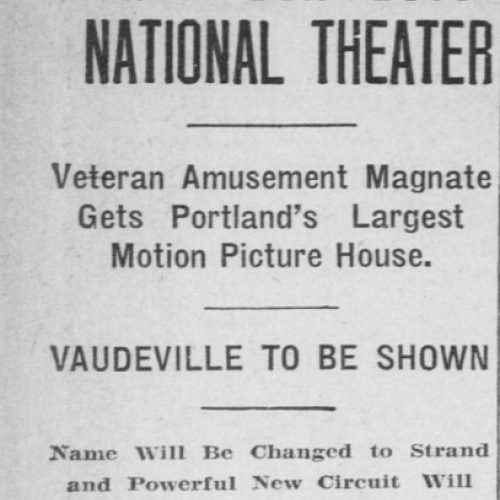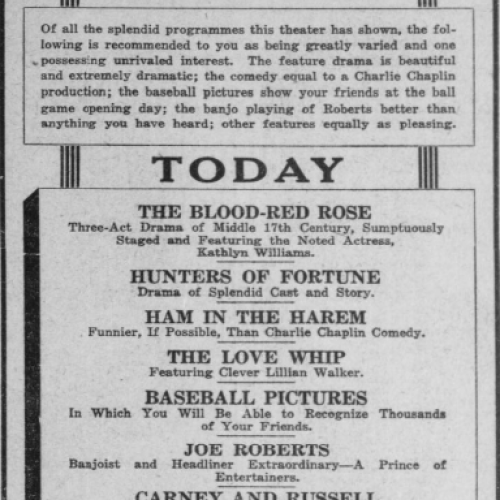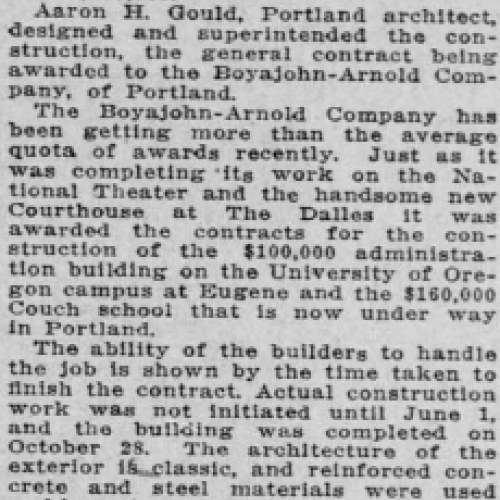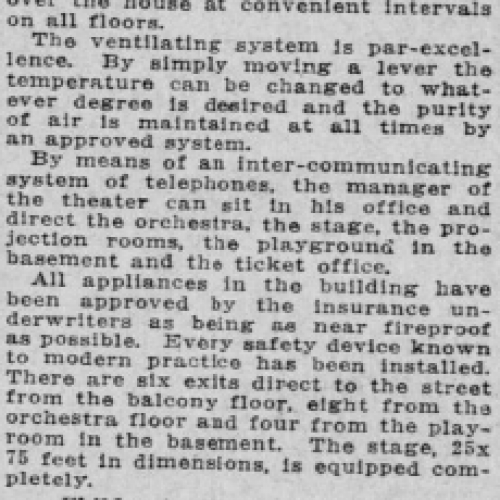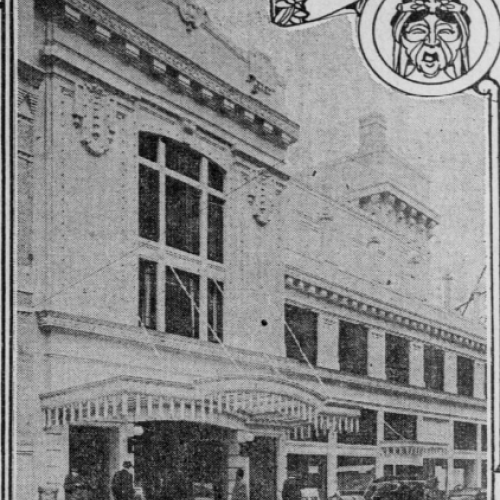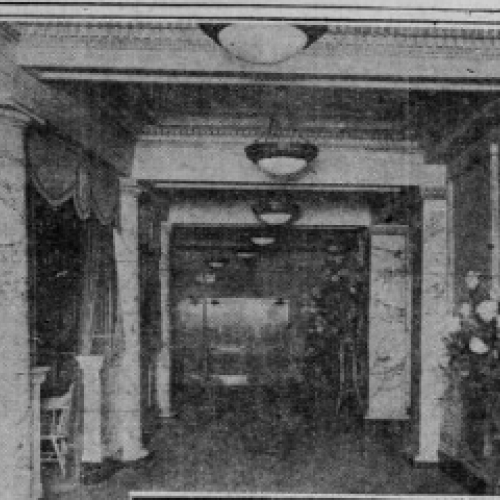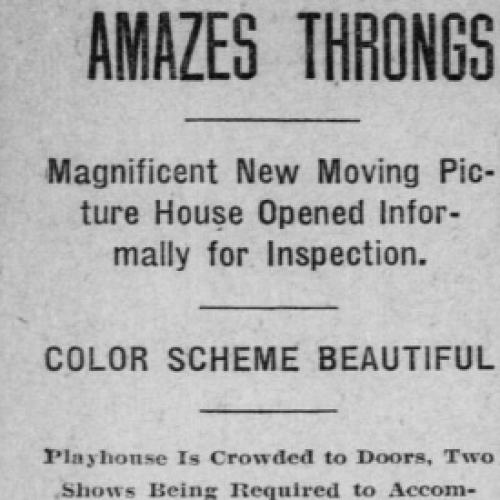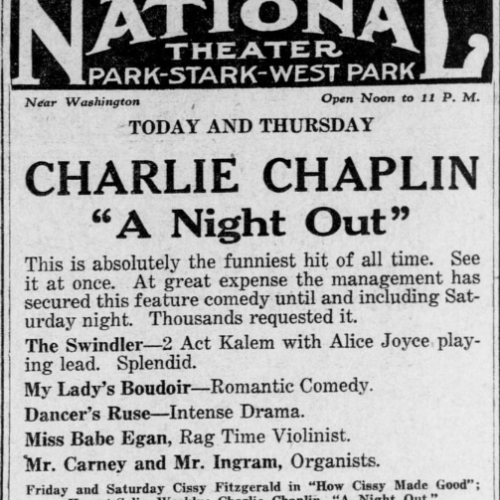The National Theater in Portland, Oregon opened on October 29th, 1914 and closed in 1916 (6). This theater was located on Stark and Park near Washington Street. It was home to 1,500 seats but one news story stated that there was ample room in the large foyers and on the mezzanine promenade.

Melvin G. Winstock is the general manager of the theater as well as the National Amusement Company and stated that he has dreamed of opening this theater for three years prior to its opening. The property of this theater was owned by the Farrel Investment Company and eventually was acquired by the National Amusement Company. In many news stories about the National Theater it was often described as the best theater on the West Coast. This was due to its ventilation system and amazing decoration. In one news story, it states, “By simply moving a lever the temperature can be changed to whatever degree is desired and the air is maintained at all times by an approved system” (1). The idea of a thermostat was very exciting and the public loved it. The programming at the National was always described as the best films out there. They also talked about the expense of the film which was something I hadn’t seen before. Using the idea of the film costing a lot of money as a promotional strategy seemed to work for them. In one ad for a Charlie Chaplin film called “A Night Out” it stated, “At great expense the management has secured this feature comedy until and including Saturday night. Thousands requested it” (2).
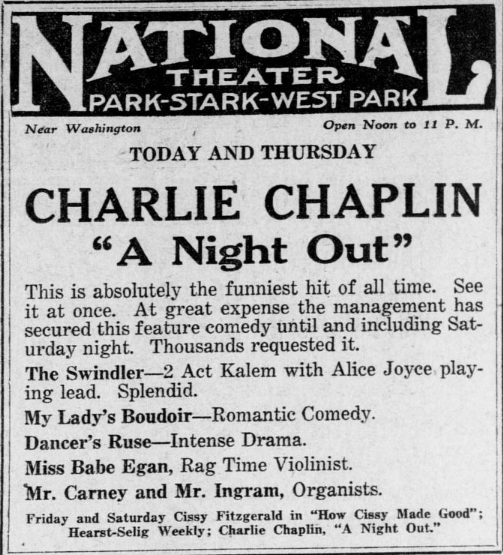
There was also music performed at the National. In one ad, there was a list of films being shown both local and feature and there were also musical performers all in one day, “It’s worth more than 10 cents” it stated(3). In addition to using the expenses of films as a promotional strategy, the National also used flashy ads to grab attention. Most ads were clad with a star border and was usually shaped like an interstate road sign. This caused the ad to stand out amongst other square-shaped ads with no flashy boarders (4).
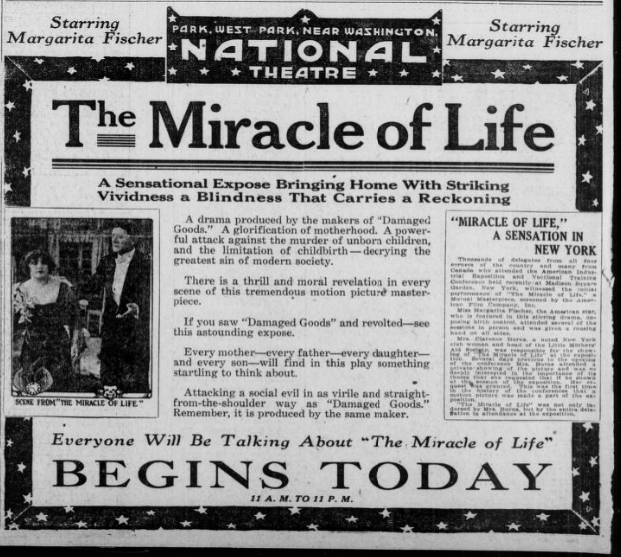
Something interesting about the National is that it had a children’s playroom in the basement of the theater. This room included “sandpiles, spades, toys, dolls, rakes, shovels, swings, chutes, hobby horses, dining sets, Teddy bears, dogs, and similar utensils calculated to delight the hearts of the youngsters of Portland”. This area was described as a place where mothers could leave their children (since there was a maid present) and enjoy the show and come check on their children like they would an umbrella or jacket (1).
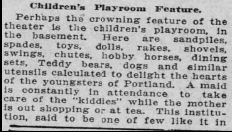
Overall, it seemed as though the National was a beloved theater during its time while open. However, in 1916 it was bought by Morton Cohn (5). He changed the name to the Strand Theater and stated that Vaudeville would be shown.
